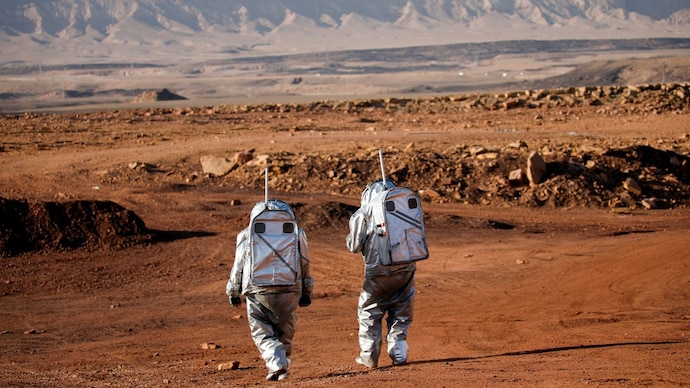
Four humans begin living on Mars. But, there is a twist
Led by Kelly Haston, who is the commander of the simulated Mars habitat mission, flight engineer Ross Brockwell, medical officer Nathan Jones, and science officer Anca Selariu are living on Mars, but its on Earth.

In Short
- Their new Martian home is on Earth
- It is part of understanding the complexities of sending humans to Mars
- The crew will work in pairs inside the habitat
Four humans have finally made their dream of living on Mars a reality, but there is a twist.
Their new Martian home is on Earth as they begin a year-long mission to explore what it will take to survive and thrive on the Red Planet. The science mission is part of understanding the complexities of sending humans to Mars as countries across the world join hands to make the human species interplanetary.
Led by Kelly Haston, who is the commander of the simulated Mars habitat mission, flight engineer Ross Brockwell, medical officer Nathan Jones, and science officer Anca Selariu entered the 3D-printed, 1,700-square-foot habitat at the Johnson Space Center in Houston.
Also Read | When Siberia shook with a mysterious mega explosion
WATCH FOUR HUMAN ENTER THEIR NEW MARTIAN HOME
Dubbed Crew Health and Performance Exploration Analog (CHAPEA), it is a ground-based mission during which researchers will simulate the challenges of a human mission to Mars, including resource limitations, equipment failure, communication delays, and other environmental stressors.
The major crew activities during the analog may consist of simulated spacewalks, including virtual reality, communications, crop growth, meal preparation and consumption, exercise, hygiene activities, maintenance work, personal time, science work, and sleep, as stated in NASA's mission brief.
Also Read | Chandrayaan-3 launch: Unpacking India's ambitious lunar mission
Meanwhile, crew members will also spend time remotely operating robotic elements, which will likely be necessary for real crews on Mars to extend their exploration capabilities. They will also be responsible for controlling a helicopter-like drone and a roving robot.
The crew will work in pairs inside the habitat to operate the drone and robot to survey remote areas and identify and retrieve rock samples.
"The simulation will allow us to collect cognitive and physical performance data to give us more insight into the potential impacts of long-duration missions to Mars on crew health and performance. Ultimately, this information will help NASA make informed decisions to design and plan for a successful human mission to Mars," said Grace Douglas, CHAPEA principal investigator.
Also Read | India signs global Artemis accord with US, to share data resources over Moon mission
The American space agency is planning three such analog missions to better understand the requirements for a habitat on our next-door cosmic neighbor. While analog mission one commences this year, the second mission will be conducted in 2025, and the third mission will be followed up in 2026.
The Mars Dune Alpha is a 3D-printed structure designed to support long-duration, exploration-class space missions. It provides separate areas within the habitat for living and working. The habitat has four private crew quarters, dedicated workstations, a dedicated medical station, common lounge areas, a galley, and food growing stations.
Also Read | Why India signing Artemis accord with US is a big deal
